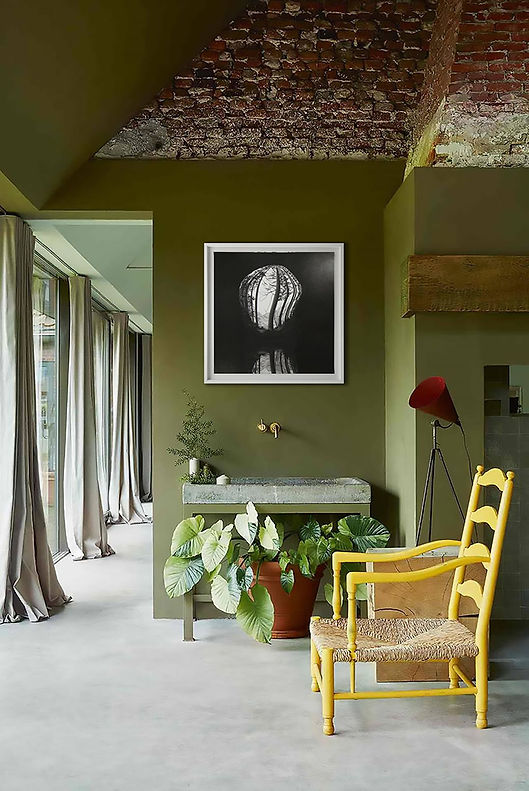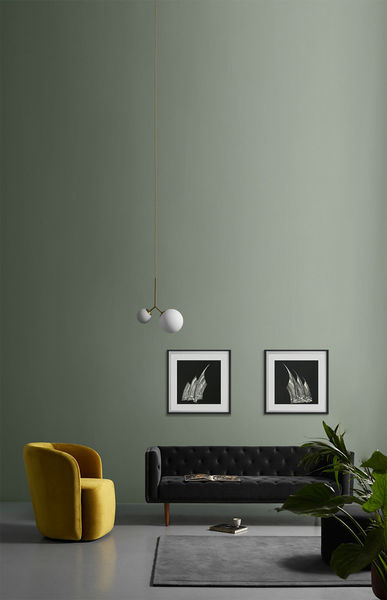
Folding the Visible
Curated by Maria Valeria Biondo
Introduction by Andrea P. Maffioli
During the strange and introspective months of lockdown, Jemma Appleby spent days reorganising her studio.
Charcoal blocks, the marble mortars, rolls of paper, current and past artworks, sketches.
The world outside was rapidly changing, but the pace of life had drastically slowed down, almost to a standstill. For the artist, it felt like the perfect moment to rediscover earlier series of artworks, rarely if never exhibited in the past.
Environment #8 was one of Appleby’s first dive into the representation of distorted reflections, inspired by the Hutong Bubble by MAD Architects. This unusual piece of architecture was created with the purpose of camouflaging into an urban environment. Its highly reflecting surface effectively hides the content of the bubble. In her own work, Appleby displaced this structure into a different environment, removing it from the city landscape, and freeing it into a natural environment surrounded by an idealised and lavish valley. In Appleby’s work, the means of disappearing becomes the main subject, as the reflection is all there is left to see. The precise study of this fictional reflection is not a mere skill exercise à la Escher, but rather discovery and transformation of our surroundings, the creation of an environment in detail.

With the series Jubilee and Holon Appleby took this idea further, thinking of great architecture that were built with the purpose of regenerating an area or an entire city. Ron Arad’s Holon Design Museum in Israel and Richard Meyer’s Jubilee Church in Rome were both born with this intent.
The artist imagines these structures as highly reflective, a mirror towards surrounding nature. The real protagonist shifts from the architecture to the environment, concealed from our eyes but very visible in all its distortions and details. The buildings become invisible, thus showing us even more.
These works were of paramount importance in the development of the artist’s practice and thinking, the advancement of her already impressive skills in the use of charcoal on paper, her study of light, its iterations and the relationship with nature.
In a moment such as this one, the artworks give us a perspective into reflection, physically and symbolically. The title Folding the Visible refers to both the subjects of the artworks, and their location in idealised rooms around the world.
Desktop view is highly recommended.

Folding the Visible
Jemma Appleby’s works focus on the dialogue between architecture and landscape, coming back to the question of Time. By reflecting on concepts such as repetition and solitude, she finds an innovative method of abstraction.
Grinding charcoal and applying it on paper with bare hands, the artist reveals the technically astonishing, yet minimal, relatable memories on paper. It is possible, especially when coming closer to the works, to admire almost imperceptible imperfections.
This selection of drawings wants to focus on the artist’s relationship with reflection, both as reflecting surface and method of innovation. Starting from Environment #8, Appleby invites us to stand in front of these mirrors, and to project on them our own personal environments and memories. Inspired by Hutong Bubble 218 by MAD Architects, a network of metallic bubbles to be cultivated in Beijing’s historic neighbourhoods, the artist screens in a natural landscape into one of these bubbles. Everything appears distorted, yet extremely static.

A feeling of calmness is resumed in Appleby’s work by the repetition of the same architectural forms. The knowledge and experience within this repetition makes it possible to make an act of abstraction by taking the objects into a pitch black environment. Here, only reflections of lost landscapes remain visible. And now, the only way to remember is by reflecting on the Outside. Time makes “the slightest change result in phenomenological moments which twist the already sublime environment into moments of questioning”.
The joy of having to think results in innovation, freedom, and invention.
From the pure reflection within the organic architecture of the Hutong Bubble, we are taken to the swirling movement of the Holon Series and the upward projection of the Jubilee Series.
These two different dynamic movements enable multiple readings of reality and human perception within the same context. They are given an introspective feeling by focusing between the natural world and its reflection on architectural facades.
By distorting, and folding the visible, the invisible is unmasked.
Maria Valeria Biondo








The images in this online exhibition had been downloaded and edited from different sources on the internet.
Steps had been taken to contact the owner(s) of the photographs, if you have any questions please email info@db-gallery.com


















